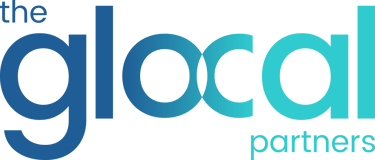Strategic Workforce Planning
Aligning Talent with Business Objectives
The Glocal Partners
4/22/20251 min read


Effective workforce planning enables organizations to proactively identify and develop the talent needed to achieve business goals, especially in rapidly changing market conditions.
Key Workforce Planning Challenges:
Skill Gap Identification – The Bureau of Labor Statistics' Employment Projections (2022-2032) indicates a 12% growth in specialized technical roles that 65% of organizations struggle to fill internally.
Aging Workforce Transitions – According to AARP's Workforce Trends report (2023), 38% of organizations face knowledge transfer challenges as experienced workers approach retirement.
Workforce Agility – McKinsey's Organizational Agility Survey (2023) reveals only 27% of companies can rapidly redeploy talent to address shifting business priorities.
Effective Workforce Planning Strategies:
Skills-Based Talent Architecture – Mercer's 2023 Global Talent Trends Study shows that organizations using skills as their primary talent currency improve internal mobility by 43%.
Strategic Succession Planning – According to SHRM's 2022 Succession Planning Research, structured knowledge transfer programs reduce productivity gaps during transitions by 33%.
Workforce Scenario Planning – Oxford Economics' Labor Market Research (2023) confirms that organizations conducting quarterly workforce scenario planning respond 2.3x faster to market changes.
Key Takeaway
Deloitte's Human Capital Trends (2023) demonstrates that organizations with mature strategic workforce planning practices are 42% more likely to outperform financial targets and 31% better at retaining critical talent.
Book a Free Session with The Glocal Partners to discuss more details!
References:
Bureau of Labor Statistics. (2022). Employment Projections: 2022-2032. https://www.bls.gov/emp/
AARP. (2023). Workforce Trends Report. https://www.aarp.org/work/employers/info-2023/workforce-trends.html
McKinsey & Company. (2023). Organizational Agility Survey. https://www.mckinsey.com/capabilities/people-and-organizational-performance/our-insights
Mercer. (2023). Global Talent Trends Study. https://www.mercer.com/en-us/insights/global-talent-trends.html
SHRM. (2022). Succession Planning Research. https://www.shrm.org/resourcesandtools/tools-and-samples/toolkits/pages/managingsuccession.aspx
Oxford Economics. (2023). Labor Market Research. https://www.oxfordeconomics.com/resource/global-talent-2023/
Deloitte. (2023). Human Capital Trends. https://www2.deloitte.com/us/en/insights/focus/human-capital-trends.html
theglocals@theglocalpartners.com
© 2025. All rights reserved.
This website is Powered by: The Glocal Partners LLC
